How to Brew Green Tea
In the first installment of this series, we looked at the basic steps of brewing tea. In this post, we will look at how to brew one specific category of tea- namely green tea.
Parameters
In brewing tea, an important concept is finding the optimum balance between
i) Quantity of tea leaves
ii) Infusion time
iii) Temperature of water

In addition, the choice of brewing vessel makes a difference as well. For example, because of the heat retention properties of Yixing pots, the infusion time should be about 20% shorter than using a drinking glass for example.
Ultimately though, it’s a matter of personal preference. And not all Longjings are created equal for example. A Pre-Qing Ming Longjing might benefit from a slightly lower temperature compared with a more matured one.
However we suggest a set of guidelines for you to start off with which you can fine tune to your own liking thereafter.
Generally speaking, you won’t be too far off the mark if you start with these parameters for green tea:
a) 1 g of leaves for every 50 ml of water
b) 2 minutes infusion time for first steep and increase by 30 seconds thereafter
c) Water temperature at 80°C
In general, good green tea leaves can be steeped 3-4 times without losing its flavor.
Steps in brewing green tea
Brewing green tea is slightly different from other types of teas in that there are 3 different basic methods, namely:
1) Bottom Drop Method
2) Mid-Drop Method
3) Top- Drop Method
In addition, for green tea, ‘rinsing’ of tea leaves is not required since
i) Green tea leaves are generally fresh and quickly stored free of oxygen and moisture
ii) Green tea leaves are usually not tightly rolled or compressed and doesn’t require a ‘warm-up’ rinse
iii) Green tea is generally infused for longer periods compared to oolong tea and Pu-er and the ‘warm-up’ rinse is not so crucial
Bottom Drop Method (下投法)
This is the most basic method
1) Add hot water to warm the brewing vessel and discard the water
2) Add tea leaves
3) Add hot water again
4) Infuse for the recommended time
5) Decant and serve
This is used for tea leaves that are flatter and tend to float such as Longjing and Taiping Houkui.
Mid Drop Method (中投法)
As its name suggests, the leaves are ‘dropped’ midway.
The steps are as follows:
1) Add hot water to warm the brewing vessel and discard the water
2) Add hot water to about ¼ of the vessel
3) Add tea leaves
4) Fill with hot water
5) Infuse for the recommended time
6) Decant and serve
This is used for tea leaves that are wiry or tippy but not overly delicate or brittle such as Huangshan Maofeng and Liuan Guapian.
Top Drop Method (上投法)
In complete contrast to the bottom drop method, leaves are added after water
The steps are as follows:
1) Add hot water to warm the brewing vessel and discard the water
2) Fill with hot water
3) Add tea leaves and allow it to sink
4) Infuse for the recommended time
5) Decant and serve
This is used for tea leaves that are delicate and could be broken by pouring water on dry leaves such as Xinyang Maojian and Bi Luo Chun.
Equipment Needed for Brewing Green Tea
The basic equipment needed is:
1) Brewing vessel
2) Drinking cup (if brewing vessel is drinking cup then obviously this is redundant)
3) Receptacle to pour out hot water- doesn’t need to be a tea tray, can be a simple bowl
4) Serving pitcher or fairness cup
More on vessel selection is covered in this article but for green tea the recommended vessels are a gaiwan, drinking glass and infuser mug.
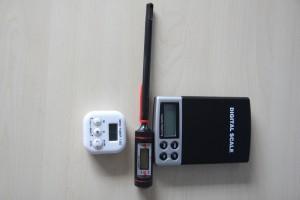
1) Variable temperature kettle
2) Water Thermometer
3) Timer (if not any smartphone has a timer function)
4) Digital weighing scale that can measure up to 1g accuracy
A variable temperature kettle is often expensive- at least outside of China- but you can get by with a thermometer.
I found a rather inexpensive source of water thermometer and digital weighing scale at Qo100 (former GMarket) at $8.20 and $9.99 respectively.
Disclaimer: We are not associated with either supplier, merely showing one source that at least we personally verified that provided an inexpensive, workable product. For bargain hunters, please be informed that I didn’t do a price comparison and there could be cheaper alternatives elsewhere.
Nevertheless, for those who are so inclined, measuring equipment doesn’t need to cost a bomb.
As for a timer, you can use your smartphone, if not I bought the pictured timer at Daiso for $2 including a replacement battery.
Alternatively
If you purchase from our online tea shop, we give a standard sized measuring spatula (cha ze) for every first time customer. Pictured below is 2 g worth of our green teas, measured in our standard (cha ze) for your reference.
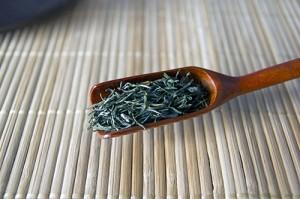
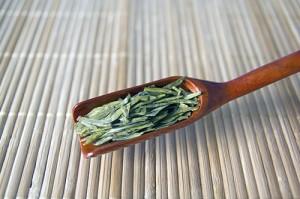
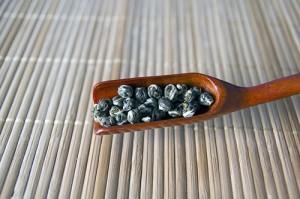
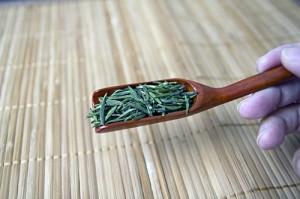
1) 2.5 minutes for the serving pitcher in our Peony Set to cool down to 80°C
2) 3.5 minutes for the Rainbow Mug to cool down to 80°C
You can allow the water to cool down before pouring on the shouzhuawan if you’re brewing with the Peony Set or add the filter if you’re using the Rainbow Mug.
Note:
Here are some additional points to note:
1) Don’t cover the lid of the brewing vessel completely when brewing green tea as it will result in the tea being ‘yellowed’ and losing its freshness
2) After infusion, decant completely as the residual water will lead to the next brew being very bitter and astringent
3) Cover the tea leaves in between infusions and try not to wait too long as the resultant brew may taste ‘metallic’ due to bacteria build-up
4) Where possible, avoid dousing the leaves with water but pour along the walls of the vessel
See our range of green teas
See more articles related to brewing tea
